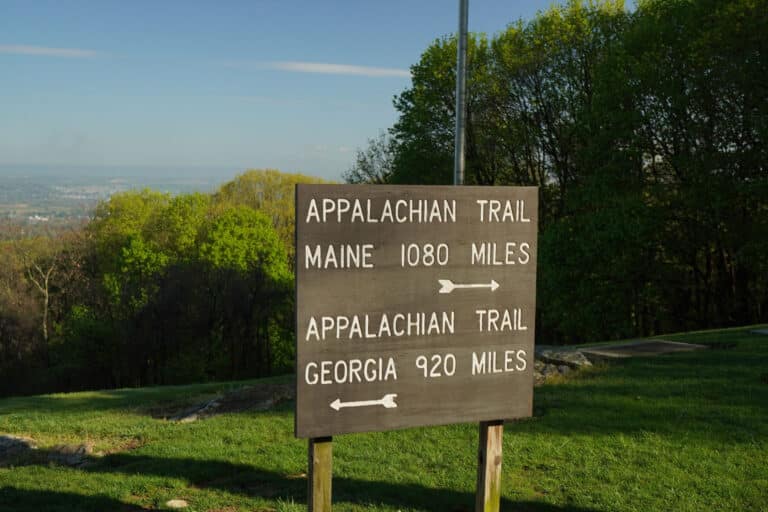Man completes marathon carrying 30 pounds of garbage on his back

(Photo courtesy of Andrew Otazo.)
Andrew Otazo stumbled across the finish line of the Miami Marathon roughly 10 hours after he began. There was a reason for his
“I wanted to produce a very blunt metaphor where I wanted to take the trash out of the swamp, build it into a bag, put it on my back, and then walk it the length of the marathon so people could see it
The idea began after Otazo spent time exploring a nature preserve near his home in Key Biscayne, Florida. The high tide flow of the water there tends to leave garbage tangled in the roots of the mangrove trees. Otazo and his partner began cleaning up parts of the preserve, removing an estimated 6,500 pounds of garbage. The marathon was part of a fundraiser for Miami Waterkeeper. Otazo raised over $4,600, which will help clean beaches and mangrove forests and aid in advocating for the reduction of single-use plastic items.

BRO: Tell us about yourself and your journey with marathons.
OTAZO: Professionally, I serve as the Executive Director of the Cuba Study Group, an organization composed of 40 prominent Cuban American civic and business leaders. Previously, I worked as a Researcher at the Harvard Business School, assistant to former Mexican President Felipe Calderón, and intern at the U.S. State Department. I’m a Miami
I’ve completed five full and two half marathons to date, having run my first full when I was 20. I really love the physically challenging aspect of the race. Unless you’re a very elite runner, you’re going to hit the wall, and the last few miles are all willpower
BRO: What were your thoughts and feelings while trucking that much trash?
OTAZO:The first 10 or so miles were great. I must’ve had 50 or so people ask me to take selfies with them. Everyone was very encouraging. At mile 11, the crowd thinned out and the aid stations closed. At 13, I was completely alone, and remained so until mile 19, when I met up with my amazing partner and a bunch of friends. Thank God for them, because there’s no way I would’ve finished otherwise. They gave me an insane amount of food and Gatorade (I drank at least three gallons throughout the race).

OTAZO: The final six miles were terrible. I was in a lot of pain. I trained for months by marching with 30 lbs of dumbbells in a hiking bag, and averaged a 17 minute/mile pace on my 18-milers. However, the weight in the trash bag was distributed much differently, putting a lot of pressure on my hips and shoulders, and seriously slowing down my pace. By mile 23, I was pausing every quarter mile. By mile 25, I was completely numb, and just wanted to finish, so I sped up until I crossed the line (which had been torn down at that point). I was very nervous before the race, but once I got started, never doubted I would finish. It was just a matter of how much it would hurt.
BRO: Was it a smelly experience?
OTAZO: Ha! I really have no idea. I was far more concentrated on the pain than the smells.
BRO: What inspired the idea?
OTAZO: The idea for the march was born out of a love for nature.
Initially, my partner, Loly Sosa, and I were inspired to clean up a mangrove preserve in Miami called Bear Cut. While she was dealing with the rigors of Harvard Law School, Loly and I would frequent the swamps of Bear Cut, often to enjoy nature or meditate. We quickly found that this absolutely gorgeous area was completely covered in trash, and began clean-up efforts. Eventually, I committed to systematically clearing every square foot of Bear Cut.
Over the span of a year, I removed over 6,500 pounds of trash. This brought some attention to the issue of marine pollution, but I wanted to quite literally bring it out of the mangrove swamps and show it to all of South Florida. So, I asked an architect/designer named Daniel Alonso (from OA Architecture) to help me build a 30 lb bag of trash that I could carry throughout the length of the Miami Marathon. I then partnered with Miami Waterkeeper, a fantastic local non-profit that protects our coastal ecosystems, to turn my endeavor into a fundraiser for their efforts.
BRO: Did you achieve the goals your set that day?
OTAZO:I just wanted to complete the race, so yes. I honestly did not care how long it took me as long as I crossed the finish line. I also surpassed my fundraising goal (we raised over $5,000), so I couldn’t be happier.
BRO: What are your current goals and plans for the future?
OTAZO: First, I want to finish cleaning up Bear Cut. I still have about 40% of the area to clear, so there’s a lot of work left to do. However, I know that unless we do something to shut off the upstream sources, the trash I remove will only be replaced with every incoming tide.
The problem is that we do not have good data on how much trash currently exists in our waterways or its origin. That makes it impossible to implement effective mitigating solutions. I therefore want to partner with local scientists to conduct a comprehensive survey of South Florida’s largest sources of trash, whether they be the canals, storm drain outflows, boaters, etc.
Once we know where most of the pollution originates and how much is circulating offshore, we can place a price tag on cost of doing nothing (i.e. South Florida dumps X amount of trash into the ocean every year, causing $Y million in damage to our local economy). Quantifying the damage will allow local politicians to invest in targeted mitigation options, such as trash traps on storm drain outflows. Otherwise, I’ll be stuck cleaning the same patch of mangroves the rest of my life without making a meaningful impact.








